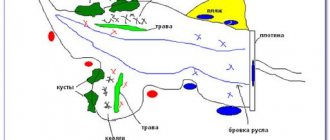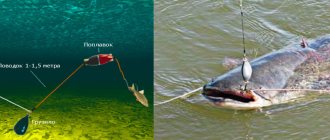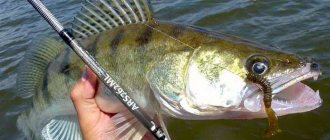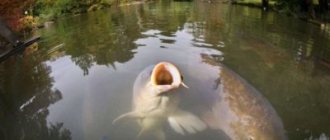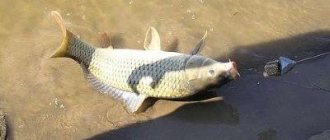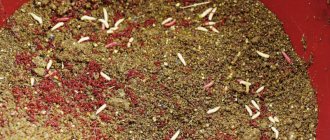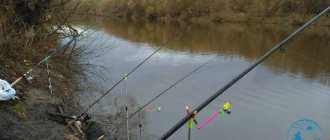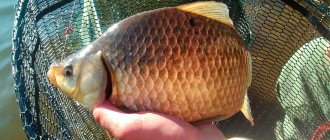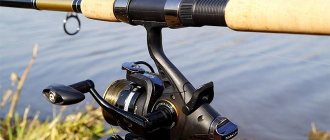Catching carp is associated with the expectation of catching a large trophy and the feeling of struggle when fishing, which is important for the fisherman. This strong fish lives in many rivers and ponds of our country. Catching large carp tempts with a variety of different tactics, searching for secluded places and, naturally, the result of fishing.
Catching carp (wild carp) on the river is in many cases much more active and interesting than catching its fellow carp in stagnant bodies of water. Carp, moreover, is stronger and sharper, and behaves more actively when fishing - and this is excitement and why we all love fishing.
Wild carp
How to find carp in a pond
Fishing for carp in most cases is carried out on the river and involves large and medium-sized reservoirs with a flat clay bottom, where the depth is at least two meters. On hard ground, wild carp rest and gain strength to enter the feeding area. As a rule, these are algae thickets and shellfish. Carp also like to stand in snags and among flooded trees.
A promising stopping point for catching carp in summer
Despite their large size, carp are quite shy and often leave noisy places. It is impossible to catch carp near large bridges and areas where there is active human activity.
Therefore, before you start fishing, you need to choose a place on the reservoir where there is a border between a quiet backwater and a small current. The fish overwinter in holes where the depth is more than 10 meters; the school becomes dense and does not show any activity.
Typical sites on the river
Practical search for parking lots on a reservoir
Sites for catching carp should be looked for away from very noisy places, selecting large backwaters with shellfish or aquatic vegetation. Rapidly changing currents where they lose speed are a priority when determining the best fishing spot.
The watershed of the streams in the river, if it turns into the calm water of the bay, is considered the most favorite area for searching for parking spots. On these shallow, up to 2 meters, plateaus, there is a mollusk, which is one of the main ones in the fish’s diet.
The depths, which smoothly turn into small spits, where shells and pebbles are located at the bottom, also have excellent prospects for catching trophy specimens. The remoteness of these areas from the coastline adds to the chances of an effective result.
Typical site - depths and snags
The presence of obstacles on the bottom plateau that delay the flow, in the form of submerged snags, as well as tree branches hanging over the water, allows the fish to provide themselves with comfortable living conditions. Such points are also worth paying attention to.
To catch a worthy trophy you need to find a promising point
When and how do fish spawn?
Spawning begins when the reservoir warms up to more than 20 degrees. This is usually celebrated in July. The fish spawn in batches, with a total of 3 spawning times. At the same time, the carp does not stop actively feeding.
For spawning grounds, it looks for shallow water, no more than 1-2.5 meters deep, and actively spawns on coastal vegetation, accompanying this action with regular jumps from the water.
Important: Active biting of fish is most often observed immediately after spawning, while the carp can bring the food to a constant glutton.
Diet
The diet of carp is varied; it can include animal and plant baits. You can catch this fish using special baits (for example, technoplankton), but natural baits are a priority.
Nutrition Features:
- fish collect shellfish from the bottom;
- when insects are active, carp can feed on dragonflies, locusts, and beetles;
- wheat and small berries, including rowan and cherry, which fall into the water, are also included in the diet;
- summer fishing for carp is often successful if you use a bait in the form of a piece of young reed;
- caddisfly, bloodworms, daphnia, amphipods, and crayfish are also to the taste of carp.
Competition among fishermen for catching carp 06/25-27/2021, Shardara. We knit leadcore and prepare food.
⌚ — 28 minutes 45 seconds
CATCHING CARPLE WITH A FISHING ROD. DIVINE SHURPA IN KAZAN ON THE CAMP. MADE A WOODEN SPOON
⌚ — 11 minutes 53 seconds
FISHING FOR WILD CARPEL. Catching carp and crucian carp.
⌚ — 30 minutes 44 seconds
Catching CARP from under snags or the BAIT that SAVED us. Nerves, gatherings, hooks.
